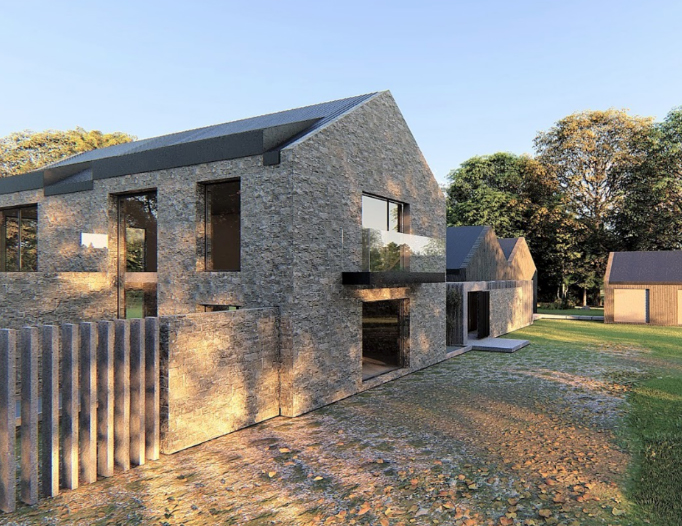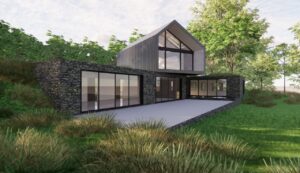Our Ultimate Guide to Greenbelt Planning Loopholes in 2025

- Just 12.4% of land in England is catagorised as green belt land;
- Between 2020 and 2021, there was a 0.1% reduction in designated green belt land, a total of 1,750 hectares;
- Between 2009 and 2018, nearly 65000 new homes were approved on green belt land, with 37% approved on greenfield sites;
- In 2017, the government backed a new homes incentive scheme to release greenbelt land for new development over a 20 year period.
Developing on green belt land does have its challenges, but it is not impossible! There are many loopholes to attain planning permission for your development by following the guidance of the national planning policy framework NPPF and see the several other pathways to get planning.
The UK Government continuously stresses the importance of preserving open, green space at every opportunity.
To this day, architects and planning consultants like ourselves still find ourselves battling with local authorities over green belt planning stances,
we collaborate with both clients and Planning Officers, until a final decision is reached. The planning process can be a precarious one, navigating through the Nationally Planning Policy Frameworks (NPPF)which may not align with the local planning authority guidelines who adopt their own policies.
This makes it especially tricky, and our architects & planning experts are always finding new greenbelt planning loopholes to help with the next application. With over 16 years of experience,
we study the feasibility of your project and determine the likelihood of obtaining planning permission. Having undertaken numerous green belt projects we have gained experience across a range of developments, with some success others faced with resistance. With every project regardless of the outcome, it offers a valuable lesson.
While the green belt may allude itself to being an area of large green parcels of land in many cases greenbelt areas have already been developed.
There are many exemptions of building on green belt areas and these include:
- Buildings for Agriculture and Forestry;
- Provision for appropriate facilities e.g. outdoor sport, recreation, cemeteries or allotments;
- Extensions to existing dwellings provided they do not result in disproportionate development;
- The replacement of a dwelling, provided it matches the scale and use of the original property;
- Limited infilling in villages;
- Limited affordable housing for local community needs
- Limited infilling or redevelopment of previously developed land (brownfield), providing it would not negatively impact the sense of openness in the context.
Extending your home:
The purpose of a green belt is to protect the sense of openness and limit development. Therefore, extending beyond the recommended guidelines for your home could result in potential harm to the ‘sense of openness’ so it is important to get advice from an Architect or Planning Advisor before you build.
We have studied projects which permit up to 50% of the original volume, however, for example, Kingston upon Thames alongside others allow a mere 20% increase of the original building’s footprint. This space could be obtained with a householder application, or what you might find surprising is that you can also utilise your permitted development rights in the greenbelt.
Do you have Permitted Development (PD) rights in the greenbelt?
On the other end of the spectrum, the green belt, although making development challenging, has a lot of potential. Building a new home in the countryside is a dream for many, offering spectacular views, discrete locations and diverse rural landscapes.
There are several greenbelt planning loopholes that you and your architect must be aware of in this case, ensuring you the best possible chance of a successful application!
#1: Previously Developed Land / Brownfield Sites
A few things to note in this case would be:
- Aim to utilise the existing or pre-existing footprint as much as possible, even to the point of using the old foundations if in good shape!
- Try not to be too greedy with your aims… sometimes it is best to get approval for something smaller and then gradually add other spaces over time.
- If you are looking to create a replacement dwelling for an existing building on site, it would be more acceptable to replace a property that you can argue is in disrepair or abandoned.
#2: Conversion of Agricultural Buildings
#3: Infill Developments
This could be within the boundary of an existing settlement/village that is washed over by the greenbelt. Unfortunately, the majority of LPAs state that if your plot lies outside of a settlement boundary, it will be treated as within the open countryside, and as such relevant council policies surrounding open green space will apply.
#4: Affordable Housing
Within cities, land is expensive and a rare commodity to find large enough sites to provide adequate housing in large quantities, and for this reason, local governments are beginning to understand that the need for housing often outweighs green belt planning restrictions. As such, it is becoming increasingly common to find new developments of housing popping up all over the greenbelt, most commonly nearby to smaller villages or towns.
If you have the capital investment to put down, then this may be a great opportunity to not only build your own home in the countryside, but also to give back to your local community and help others follow their dreams too, all whilst gaining a substantial return on your investment!
#5: Exceptional Circumstances
Though there is no defined list of what these exceptional circumstances are, through our experience some of these include if:
- i) The need for new development outweighs the need for green belt preservation;
- ii) The use of brownfield or previously developed land has been considered first;
- iii) The proposal optimises the density of development;
- iv) The scheme looks to reinforce settlement boundaries against urban sprawl and encroachment;
- v) The proposal demonstrates high-quality, sustainable development to a standard not considered possible in alternative, built up areas.
#6: Housing for Agricultural Workers
One of the lesser known greenbelt planning loopholes, perhaps because there is still a long list of restrictions attached to it, is that housing for agricultural workers associated with green belt agricultural land is marginally more acceptable, especially if it can be shown that the employees will need to live and work on site throughout the year.
Whilst this may let you build a structure or home on the greenbelt, it will not necessarily be of the highest quality, and may simply be a temporary structure or annex. The size of the property would be restricted in order to retain the sense of openness and avoid overdevelopment of the site – so no mansions for your workers I’m afraid!
#7: Paragraph 80 ‘Exceptional Quality
The clause states the key reasons where, ‘isolated homes in the countryside’ would be permissible, such as those mentioned above. However, the final point mentions ‘design of exceptional quality,’ something which may spark your imagination!
Paragraph 80 homes are those which represent outstanding architectural design, aiming to demonstrate in all avenues the very best of sustainable development, superb design and standards of living. It gets us excited just thinking about it! By considering factors such as materiality, enhancing biodiversity, blending in with the existing landscape and implementing sustainable energy and construction solutions, this further leads to a high quality and innovative result with a higher chance of receiving support from both your neighbours and the local planning authority.
“But how can this help me obtain planning permission for a new home on the green belt?”
If you are looking to build your own bespoke home on greenbelt land, Paragraph 80 can be a fantastic greenbelt planning loophole towards getting your planning application approved. With the additional investment you can design your home to be at the forefront of architectural and sustainable prowess, which ultimately your local council will appreciate and therefore up your chances. With the climate emergency being one of the most pressing issues faced by the government today, sustainable homes are becoming higher in demand than ever before, and their development is often supported by your local council.
NOTE: A good architect or planning expert will never guarantee that obtaining green belt planning is going to be easy, because it would simply be untrue! There are so many factors to consider that do take time to research, therefore it is important to do your own research first and find a dependable practice that you can trust!

Steph Fanizza, Architectural Design & Team Manager














